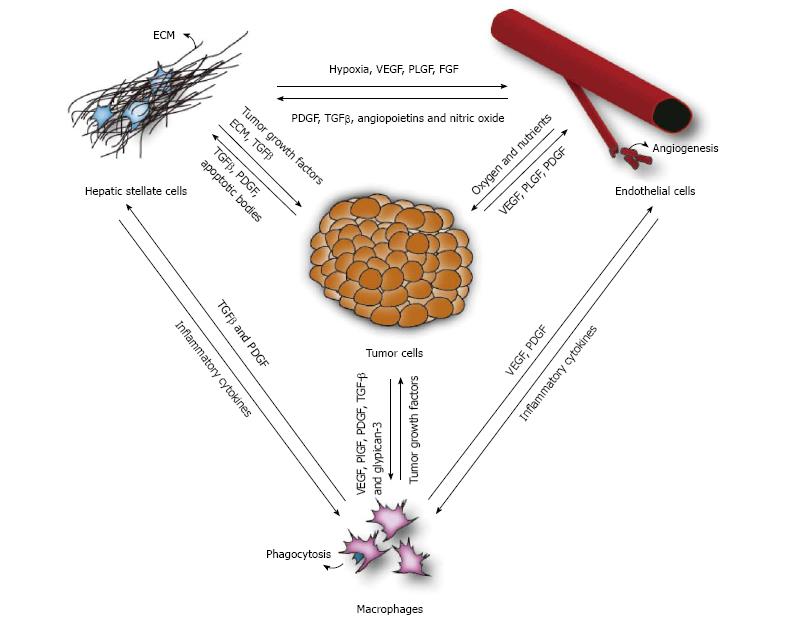Copyright
©The Author(s) 2015.
World J Hepatol. Feb 27, 2015; 7(2): 165-176
Published online Feb 27, 2015. doi: 10.4254/wjh.v7.i2.165
Published online Feb 27, 2015. doi: 10.4254/wjh.v7.i2.165
Figure 1 The interaction between tumor stroma and tumor cells in hepatocellular carcinoma.
The several actors of the stromal compartment-including hepatic stellate cells, macrophages and endothelial cells-actively contribute to tumorigenesis, while the tumor itself influences these cells to create a background that is beneficial for tumor growth. Tumor cells activate the hepatic stellate cells, leading to the deposition of extracellular matrix (ECM), an increased production of angiogenic factors and the recruitment of macrophages. The increase of angiogenic factors (secreted by macrophages, tumor cells and activated stellate cells) will induce the formation of new blood vessels, thereby supplying the tumor with more oxygen and nutrients, thus supporting tumor growth. The increase of inflammatory cytokines, leads to the recruitment of macrophages, which can exert a pro-tumoral effect by secreting growth factor and influences the activation of stellate cells. This complex interplay between the several cell types involved in liver cancer emphasizes the need for a multi-targeted approach in hepatocellular carcinoma (HCC) patients. VEGF: Vascular endothelial growth factor; PDGF: Platelet-derived growth factor; FGF: Fibroblast growth factor.
- Citation: Heindryckx F, Gerwins P. Targeting the tumor stroma in hepatocellular carcinoma. World J Hepatol 2015; 7(2): 165-176
- URL: https://www.wjgnet.com/1948-5182/full/v7/i2/165.htm
- DOI: https://dx.doi.org/10.4254/wjh.v7.i2.165









